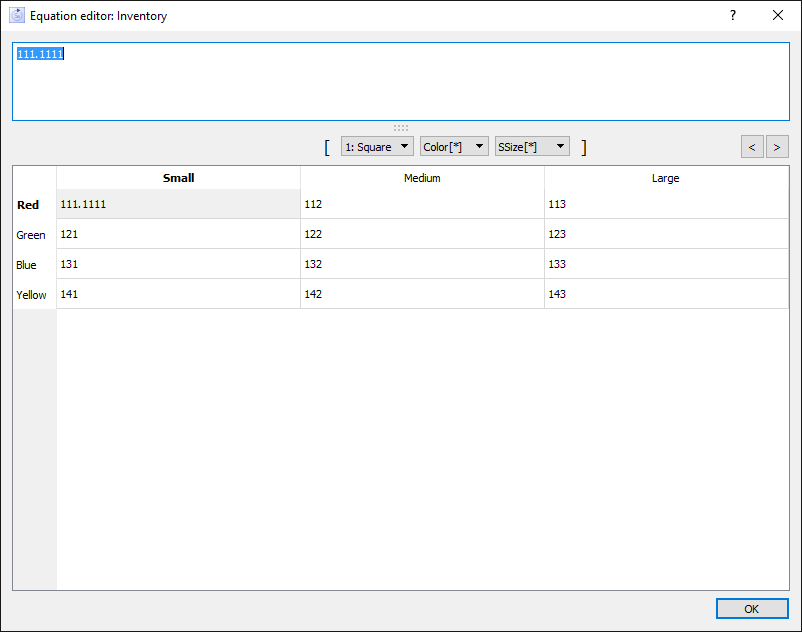For non apply-to-all arrays, you can open the equation editing portion in a separate dialog. This provides more space for editing multiple equations, and also allows you to select a number of cells to change the equations at the same time.
To open the arrayed equation editing dialog, first open the Equation Tab for the variable you want to edit. Then, in the equation area, click on the ![]() button at the left.
button at the left.

This button will only be visible when the Apply To All check box is not checked. After you click on this, the Arrayed Equation Editor will open:

The dialog contains a large window at the top for editing the equation, and displays the different equation entries in a two dimensional grid.
To edit a single value, click on a single cell in the grid, then type in the equation.
To edit all values in a row, click on the row label, then type in the equation. That row label, and all column labels, will be displayed in bold.
To edit all values in a column, click on the column label, then type in the equation. That column label, and all row labels, will be displayed in bold.
To edit contiguous cells, drag over the cells you want to change, then type in the equation. The cells being changed will highlight.
To edit non-contiguous cells, click on one cell you want to edit, and Ctrl+Click each remaining cell you want to edit, then type in the equation.
Because only two dimensions can be displayed at a time for Arrays with more than two dimensions, one of the array selection dropdowns will display the unmarked name of an array element (Square in the above example), rather than the name of an Array with a * (Color[*] and SSize[*] above). You can choose which subscript you want to see the slice of, and move from one slice to the next using the dropdowns. The < and > buttons will also move between slices.
Changes are made to the equations as you complete the entries. Click on the OK button to close the dialog and return to the Equation panel.